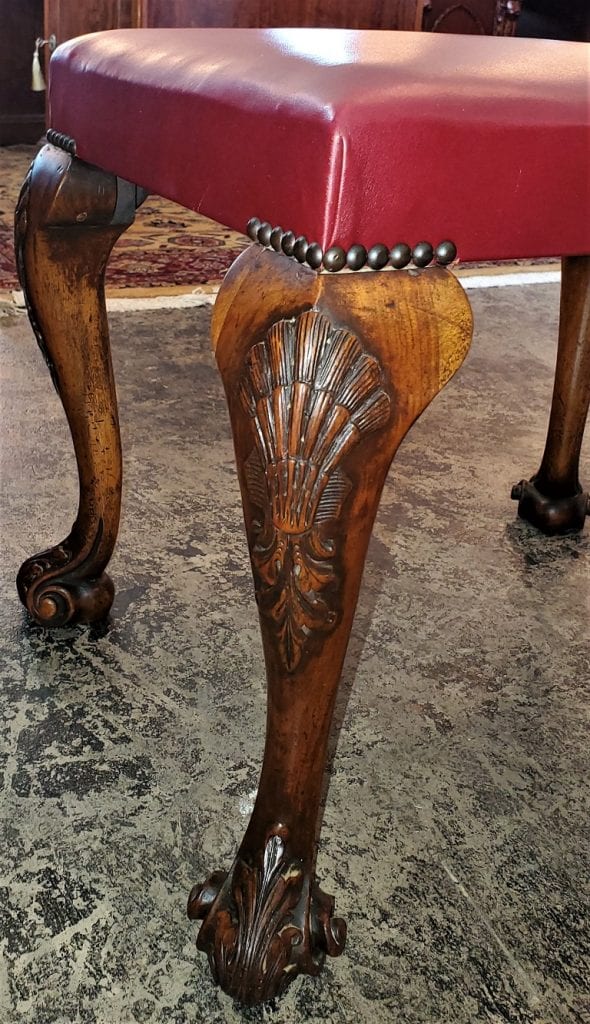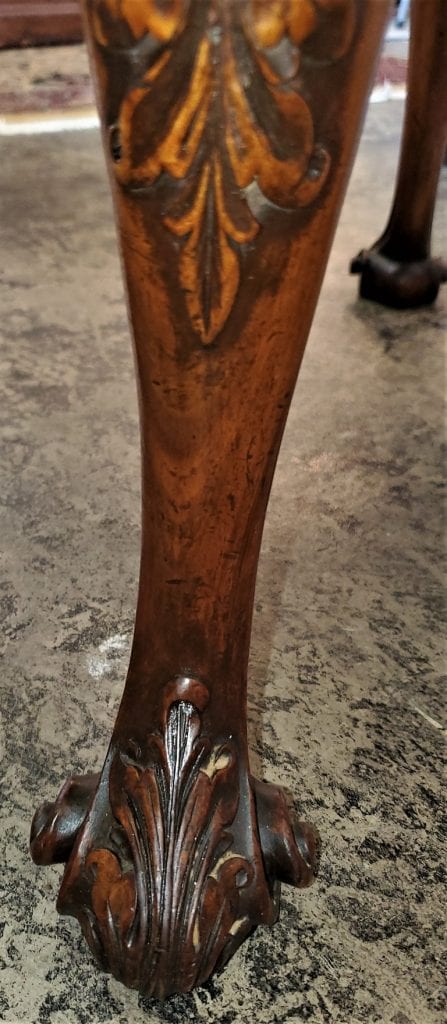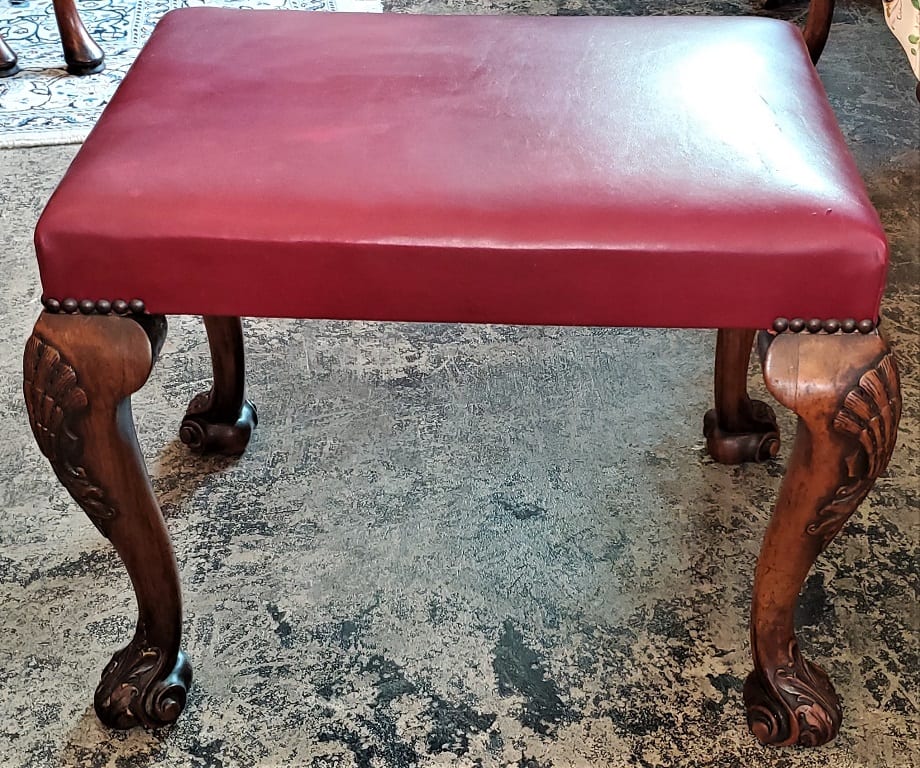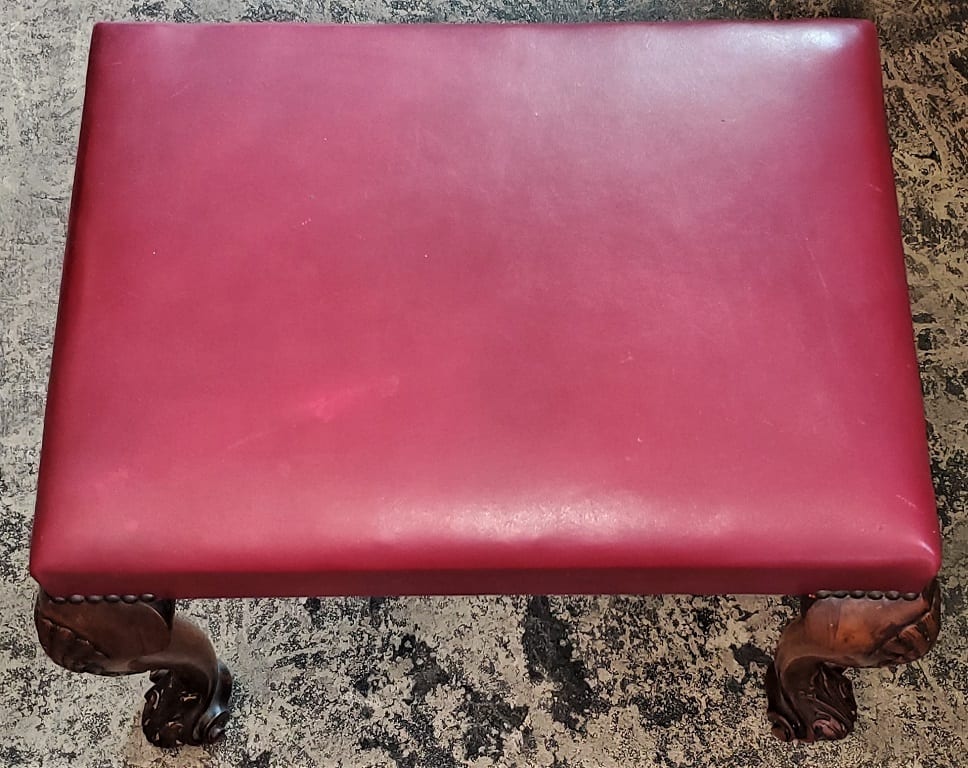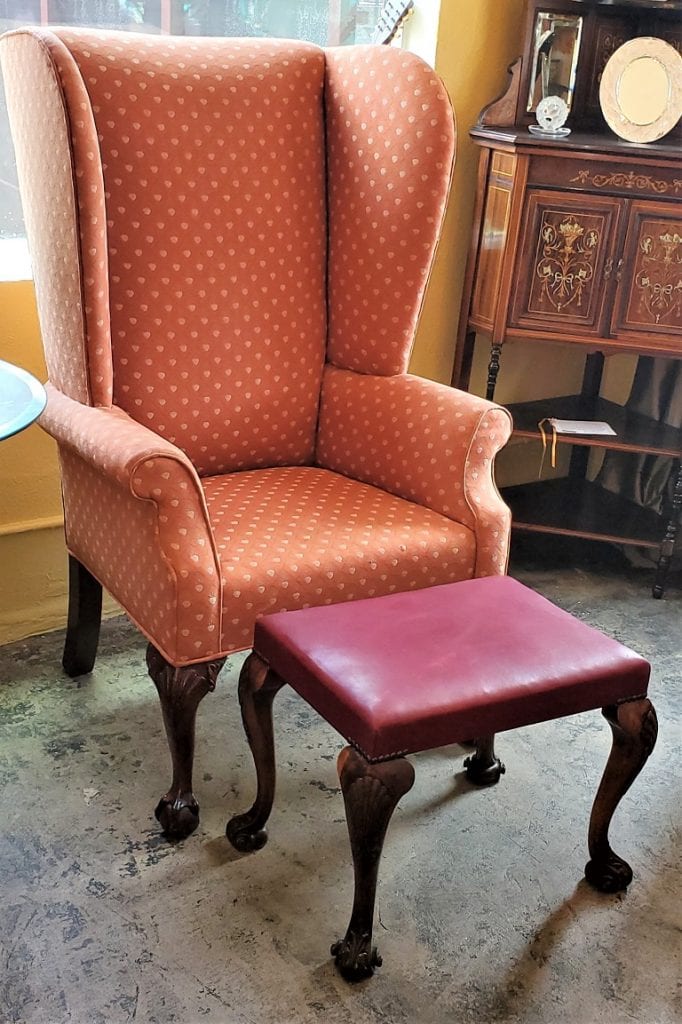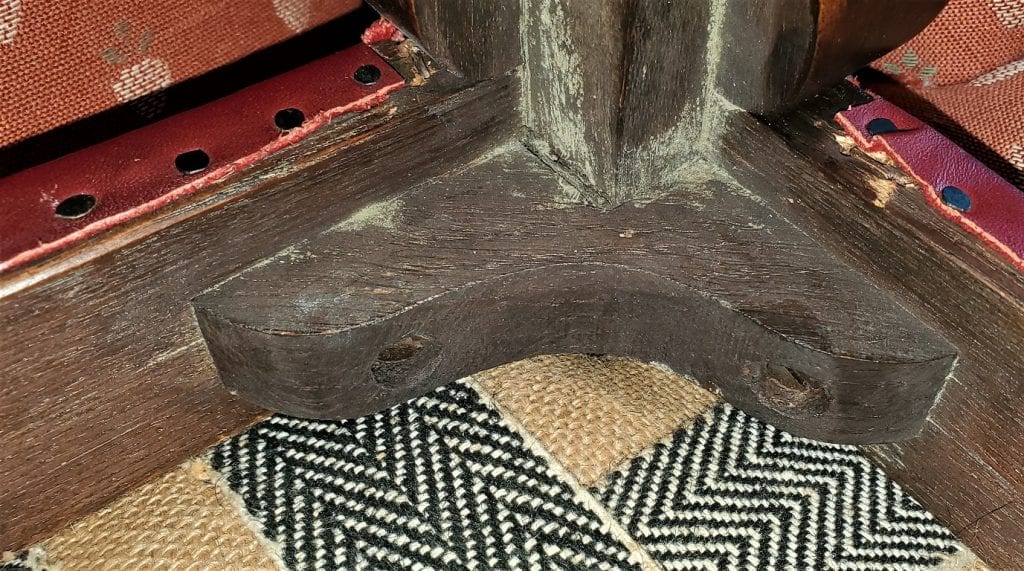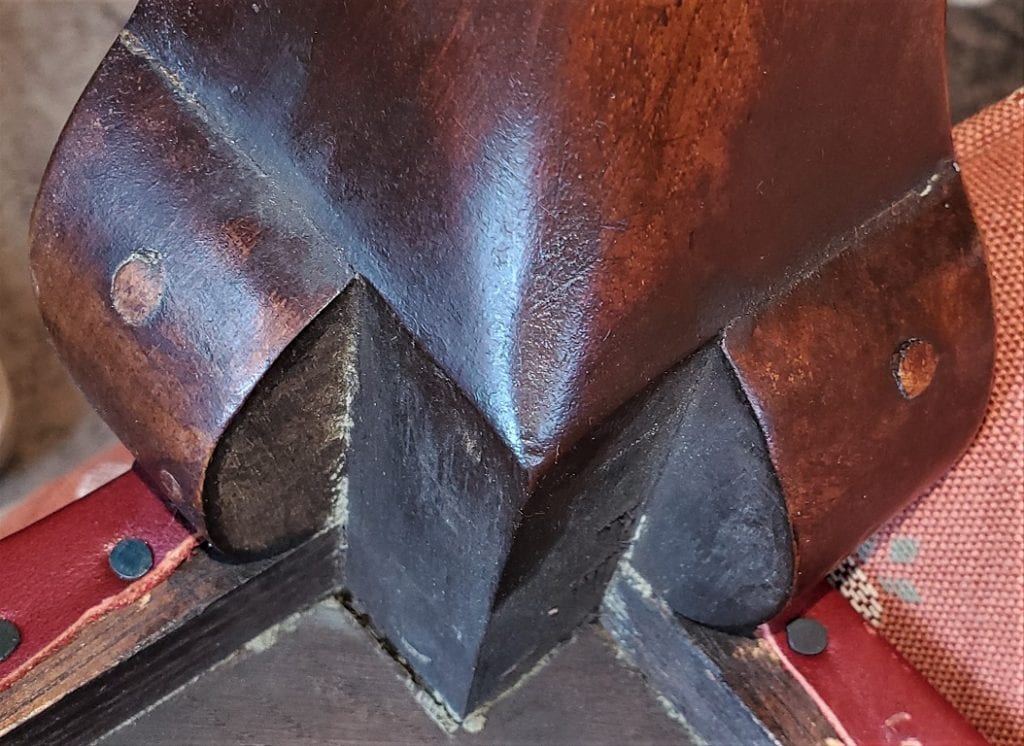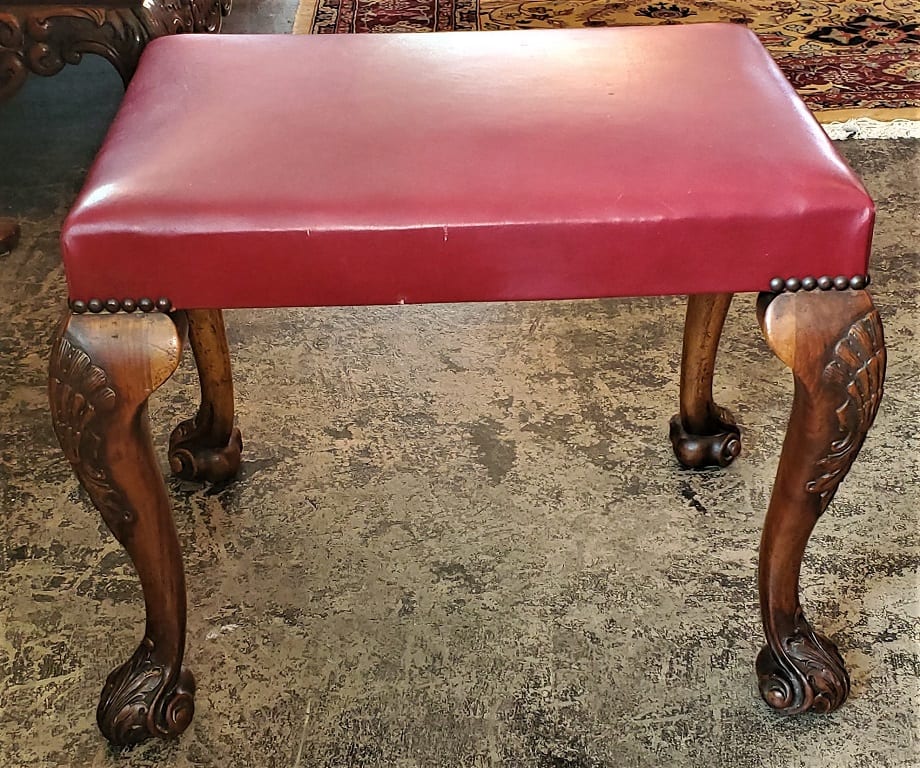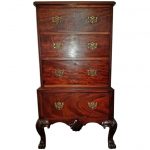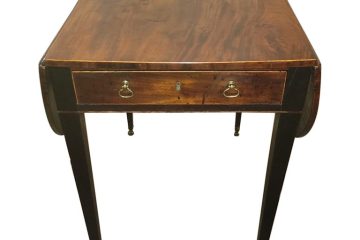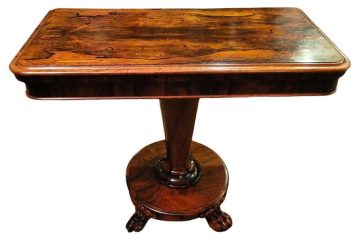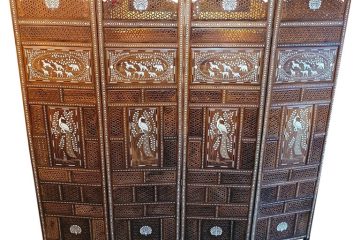Early 19C Irish Georgian Foot Rest or Stool
PRESENTING a LOVELY Early 19C Irish Georgian Foot Rest or Stool.
Made in Ireland in the Chippendale Style, of Mahogany, circa 1800-20, but repaired in the early 20th Century and re-upholstered in the late 20th Century.
It has the classically Irish Georgian Scallop Shell on each knee with turned and decorated acanthus ball feet.
Beautiful original patina to the wood through age and beautiful detail to the carving. Wooden peg construction to the legs but more recent support wedges with flat head screws from the early 20C.
The more recent red leather upholstery is affixed with nails underneath and fresh banding supports and upholstery nails on the sides at the legs.
Irish furniture can be recognised by certain features, which differentiate it from its European counterparts. The Irish style of furniture is said to have been lagging behind in fashion compared to English equivalent by a number of years, in both its design and manner by which the furniture was manufactured. A defining feature of the mid-eighteenth-century furniture is the carving on different parts of the furniture such as the aprons, blanket chests, bottle-stands and such objects. The carvings included foliated details, baskets of flowers and scallop shells, which are some of the most prominent carvings that are represented on Irish furniture at this time. A few of the Irish makers of these objects were James Hicks, Arthur Jones, William Moore, Mack & Gibton and Robert Strahan. All though individuals would have been the most prominent at the time of the 18th century and early 19th century but there are any other cabinet makers as well.
Not all Irish furniture was detailed with such wonderful carvings and some might have been seen to be rather plain. One of the most identifiable items that are described as plain is the Irish Hunt Table, its simple elegance comprising of with straight plain legs. It was most commonly used in the dining room of a rural house such as a agents house or large house of a land holder. Another very popular and simply designed piece was the Irish Silver table, its design is very elegant and yet individual partially owing to the shell motive.
Other examples of such Irish tables are side tables which have a distinctive double scrolled leg. Usually legs are carved with acanthus and have paw feet which are quite popular in Ireland but more rare in England. Other features are the inside leg which is carved with elongated C-scroll. The triple scroll on the leg was common place. Some cabinet makers and creativity was really captured with their side tables in how the carving was done. This carving may include Jupiters eagle or Lion mask and flanked Swags of flowers. In other furniture such as chairs, the H-shaped serpentine stretcher was popular in the 18th century in Ireland and when English chairs had moved forward in their design the Irish makers were still using the H-shaped serpentine. There was certainly an overlap between Irish and English furniture, one can see that Irish cabinet makers used English pattern books but used Irish features such as the carvings as the shell, baskets of flowers and foliated details. Another unique feature in Irish cabinet making was Killarney ware, its Arbutus wood unique to Killarney County Kerry and how the inlay was designed was unique in the mid 19th century period and in Irish cabinet making. These creations made the Irish furniture unique throughout the 18th, 19th and early 20th century.
Early 19C Irish Georgian Foot Rest or Stool.
Provenance: From an Estate in Kentucky/Tennessee.
Condition: Very good.
Dimensions: 17″ Tall, 17″ Deep and 22″ Wide
SALE PRICE NOW: $1,000





